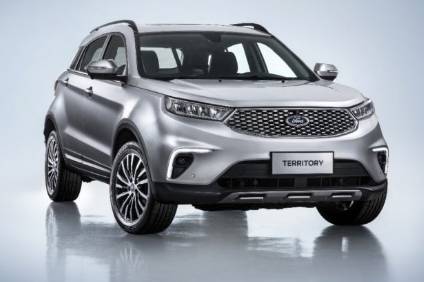News Toyota’s longest-standing ‘transplant’ facility in Georgetown, Kentucky, had started production of a new Lexus was the top story on just-auto this week.
Building where you sell has long been a Toyota mantra and North America has long been Lexus’ most happy hunting ground so building the ES350 there, along with a new F Sport version this time, makes sense. I recall the Cambridge, Ontario, Toyota plant in Canada was the first outside Japan to build Lexus – the RX as far back as 2003 – with Kentucky being added later. This redesigned ES is the first car on the new Lexus Global Architecture platform launched at Georgetown.
Several of our wider company team have been recently in the US and Calum MacRae brought us back this insightful look at the CAR Management Briefing Seminars held in Traverse City, Michigan. As he notes, there’s considerable consternation in the auto industry presently but that concern is divided into two camps. On the one hand, there are those in the here and now anxious about whether total industry volume in the US next year will be 18m or 17.8m. On the other, there are those more concerned about the future and whether CASE (connected, autonomous, shared and electrified) or ACES (to put it another way) will fundamentally challenge the industry’s business model built up over the last 100 years or so. It’s a longish read so pull up a coffee and enjoy.
We barely let a week go by without eyeballing someone’s future vehicle plans and, this week, it’s the Mercedes EQ EV line. What Daimler executives termed “Generation EQ” when revealing an EV concept at the 2016 Paris motor show is to be “the forerunner of Mercedes-Benz’s new product brand for electric mobility, EQ”. EQ encompasses many things and so far it has been applied to two Daimler makes, not just Mercedes-Benz. Earlier this year, the Smart Fortwo electric drive and Forfour electric drive were renamed Smart EQ Fortwo and EQ Forfour. EQ offers a comprehensive electric mobility ecosystem of products, services, technologies and innovations. The spectrum ranges from electric vehicles and wallboxes to charging services and home energy storage units.
Partial driver autonomy already exists in the form of automated parking systems and advanced driver assistance features. For its part, Valeo is pushing back the technical boundaries of automation to address increasingly complex urban driving situations. Continuing just-auto/Qube‘s series of interviews with tier one component suppliers, we spoke to Valeo’s Guillaume Devauchelle, group vice president innovation & scientific development, about its driver assistance and mobility solutions.
I was intrigued to see a former Ford Australia nameplate revived for a new Chinese model. Territory was a large SUV spin-off of the Australia-only Falcon but production ended when the blue oval pulled the plug on Aussie manufacture a couple of years ago. Now the automaker is working with Chinese partner Jiangling (JMC) to bring a new Ford-branded midsize SUV to China in 2019. It’s interesting to learn it is aimed at China’s fastest-growing segment – SUV buyers in emerging, fast-growing cities. The new Territory will be available with a petrol engine, 48V mild hybrid, or plug-in hybrid, and infotainment system with Mandarin voice-command function, Co-Pilot360 suite of driver assistance technologies and FordPass Connect with embedded modem.
I heard this from, funnily enough, an Australian who then headed GM China several years ago – and Ford confirms the greatest growth in demand for automobiles in China will come not from traditional ‘Tier 1’ cities such as Beijing and Shanghai, which have implemented licence plate restrictions to manage traffic congestion, but rather from smaller but fast-growing cities in the interior of the country. Ford says the number of registered passenger vehicles in Chinese cities with no licence plate restrictions is expected to soar to about 23.7m in 2020, up from 10.8m in 2010. In contrast, vehicle registrations in restricted cities are expected to fall to 1.6m in 2019, from a peak of 2.2m in 2010. The automaker said the Territory has been rigorously tested in its ride, handling and NVH (noise, vibration and harshness) levels at its own testing centres in Nanjing, China and Melbourne, Australia, to ensure it meets stringent engineering and quality standards so I wouldn’t mind betting some engineers who worked on the original Aussie Territory have had a hand in fettling the new Chinese one. Jiangling, by the way, is Ford’s commercial vehicle joint venture partner in China, building and selling the Transit – Changan is the passenger car collaborator.
The global automotive market is continuing to grow, according to analysis carried out by just-auto. However, demand in key markets is easing as concerns rise over the outlook. Here’s our commentary on the second quarter of 2018.
Have a nice weekend.
Graeme Roberts, deputy editor, just-auto.com






